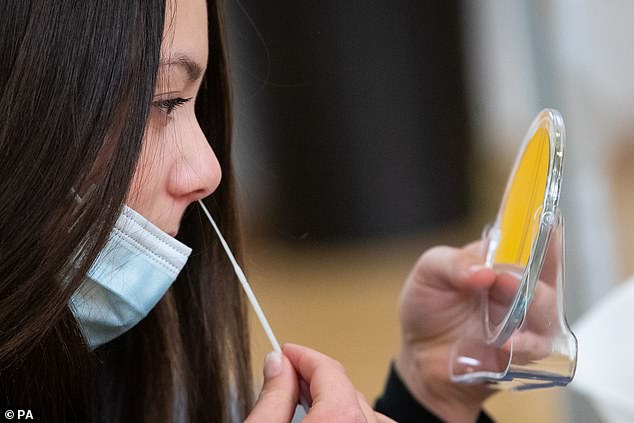Pupils are forced to perform their OWN Covid tests at school as nurse watches on
School pupils are carrying out Covid tests on themselves, despite fears over their effectiveness when self-administered.
Students at Oasis Academy in Coulsdon, Surrey, were sent the kits on Monday ahead of the regime starting.
Following the latest national lockdown being announced only vulnerable children or those whose parents are key workers have been allowed to attend lessons in person.
They were given instructions by nurses on how to carry out the tests themselves and supervised by them, similar to how some walk-in testing centres are run.
The idea is that fewer medical experts will be needed to test a larger number of people.
But it comes amid fears self-administered tests could miss cases, due to the force and depth needed to collect a sample.
Experts recommend a trained nurse or professional carries out the insertion of the swab to get to the necessary spot, which can be extremely uncomfortable.
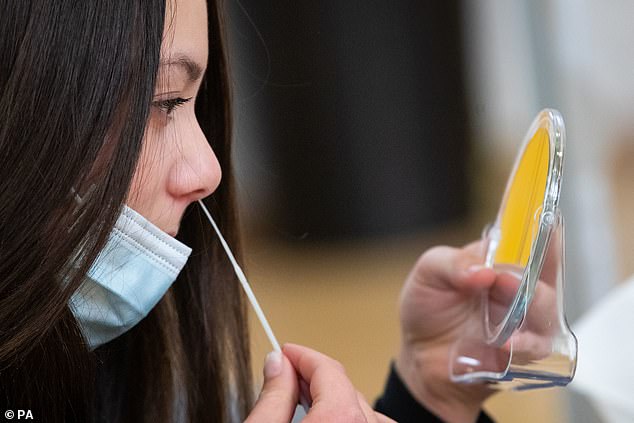
Student Molly Tinker takes a COVID-19 test at Oasis Academy in Coulsdon, Surrey, today
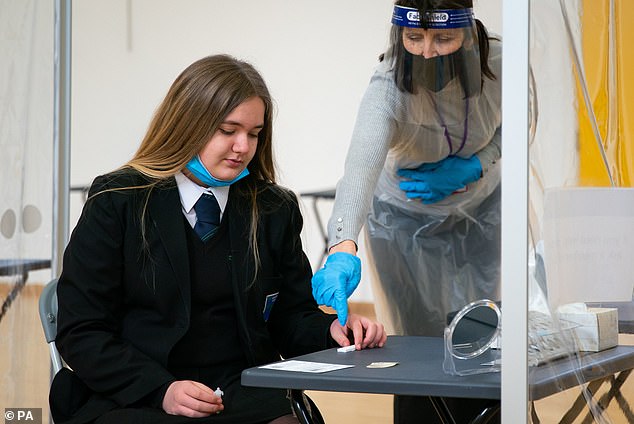
Student Ruby Soden receives instructions on how to self-administer her coronavirus test
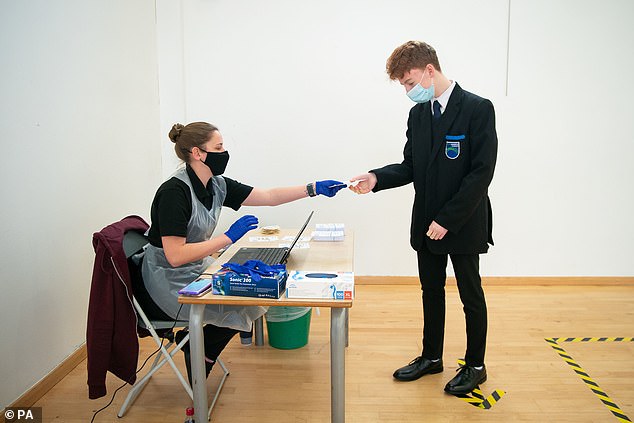
Student Henry Parker receives instructions and equipment on how to take his virus test
John Murphy, CEO of Oasis Trust, said on Monday before the lockdown and general school closures: ‘What we know for sure is that our young people make the best progress with quality first teaching, with their teachers, in the classroom with their friends.
‘Therefore, once effectively delivered, we are assured that mass testing in schools will provide additional confidence to our children, parents, teachers and staff, and has the potential to greatly reduce disruption to learning, alongside our existing Covid controls.
‘In January we will be piloting the testing in a number of our schools before implementing this to all our secondary academies across the country.’
Schools were given comprehensive online training modules with 1,500 military personnel on hand to provide advice and guidance on establishing the process.
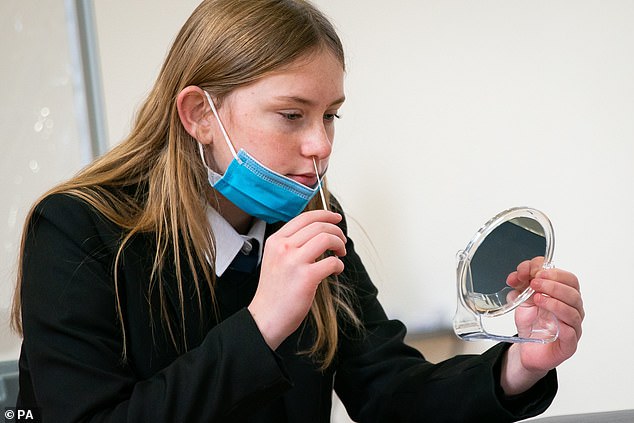
Student Lily Mae Milliman takes her COVID-19 test using a mirror to assist in using the swab
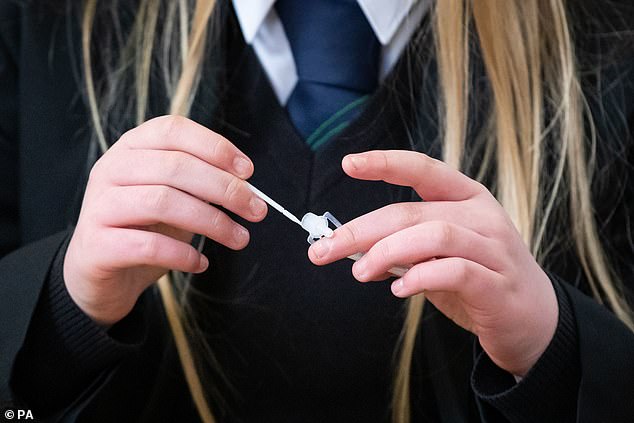
After use the swab is placed into a reacting agent which shows whether the user has Covid
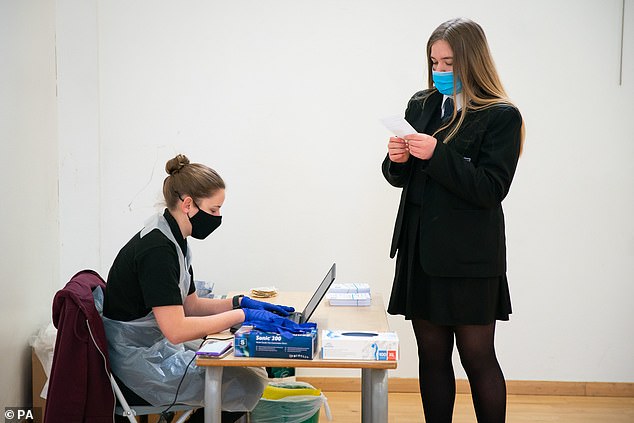
The tests were sent out to schools before they were shut down under the UK’s new lockdown
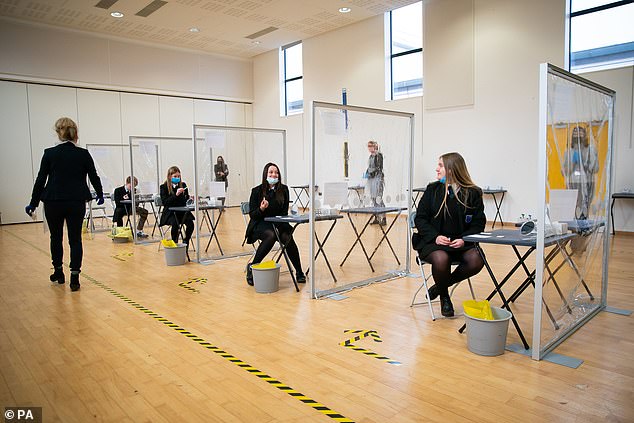
There fears self-administered tests could miss cases, due to the depth needed to take swab
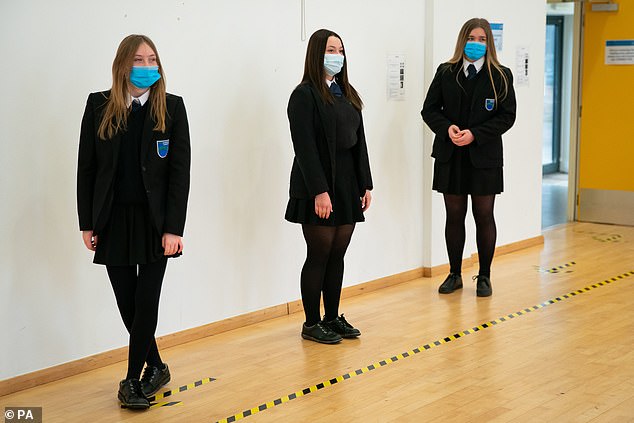
Professional use swabs are longer and when administered by a nurse can be painful
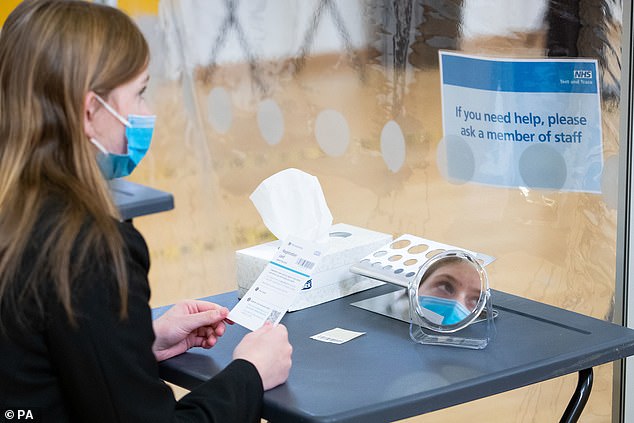
Infectious disease specialists say letting people do swabs makes false negatives more likely
Experts warned last year some self-tests are less accurate because they use shorter swabs and do not need to be inserted as deeply into the nose.
Instructions for some say: ‘No force is needed and you do not have to push far into your nostril.’
However, professional-use swabs – which are much longer and are designed to take samples from the ‘floor’ of the nose – can make people gag, their eyes water or even trigger nosebleeds when carried out properly.
Infectious disease specialists say letting people do swabs themselves – notoriously difficult even for trained medics – makes false negatives more likely. False negatives mean people who are infected with the virus are wrongly told they’re in good health.
Britain’s current guidelines mean there is no rule to tell them to stay at home after a negative test, even if they have symptoms. Medics say Britain is out of step with other countries such as New Zealand – which contained its Covid-19 outbreak quickly, which place less importance on tests and do them multiple times.
Norwich-based researcher Dr Katherine Deane, branch equalities officer for the University and College Union, is worried about how effective infection control will be.
She told the Eastern Daily Press: ‘Schools don’t have experts in infection control, so the level of precision there will be on the set up, the cleaning of the area, the wearing of personal protective equipment and the ventilation is all worrying.
‘When you have a swab test, that tends to produce a cough – a gag reflex and the droplets go into the air.
‘The big ones will fall quickly, but the fine ones can stay in the air for up to an hour.
‘And yet, the idea of the testing is that you get a student swabbed, you clean up and five minutes later the next student is tested.
‘It means the volunteers supervising can be at higher risk of infection and, unless the infection control is meticulous, the venues run the risk of being the site of super-spreader events.’
Professor Jon Deeks, a biostatistics expert at the University of Birmingham, said: ‘A single negative test result doesn’t exclude the disease. You can so easily miss the virus – they give a lot of false negatives.’
Research suggests up to 30 per cent of professional swab tests return false negatives, meaning the number of positive cases may be underestimated by thousands.
It is not clear how inaccurate self-swabs are, even though they are being carried out more than 60,000 times a day in the UK. The Department of Health will not release data about the false negative rates of its tests.

